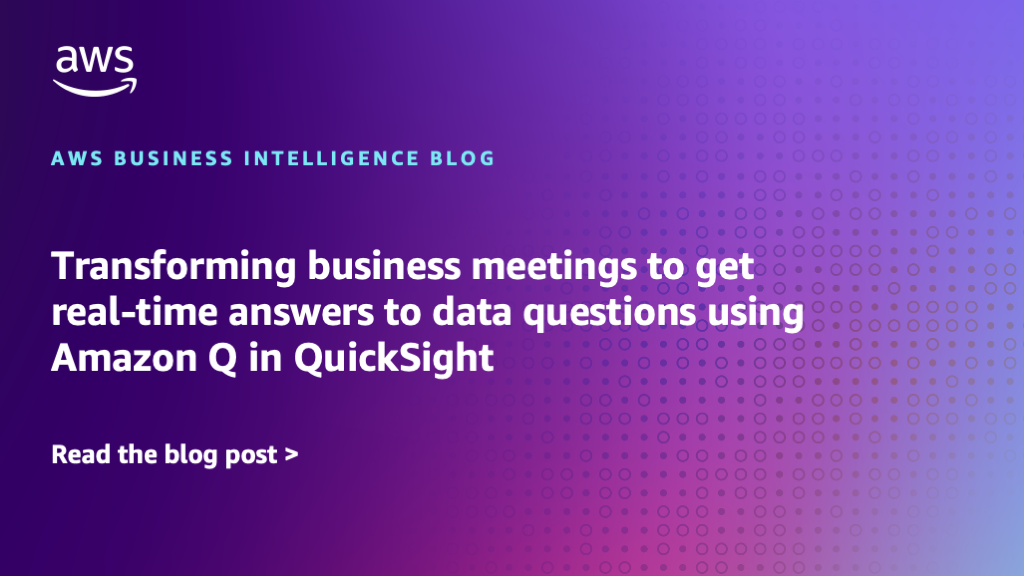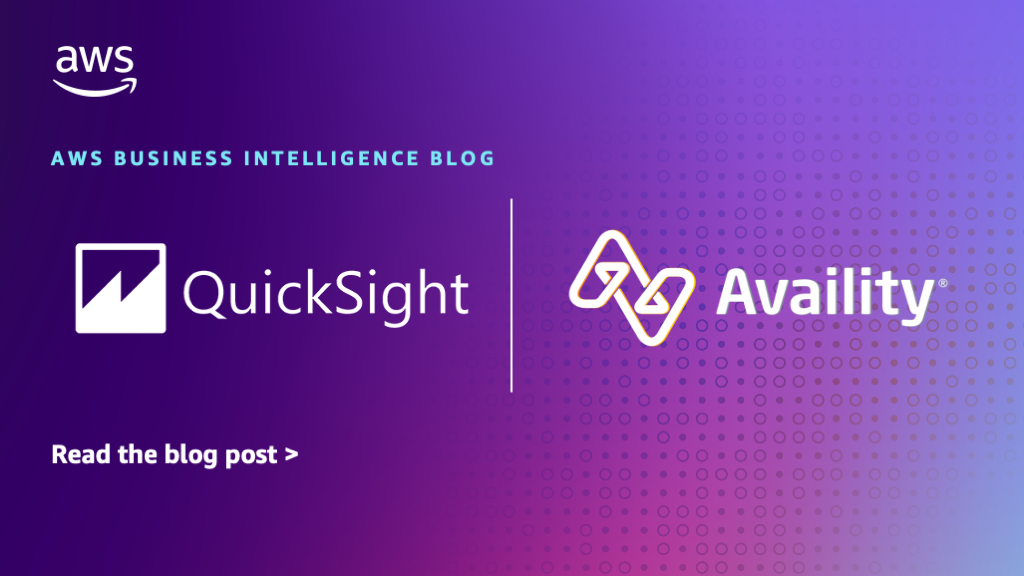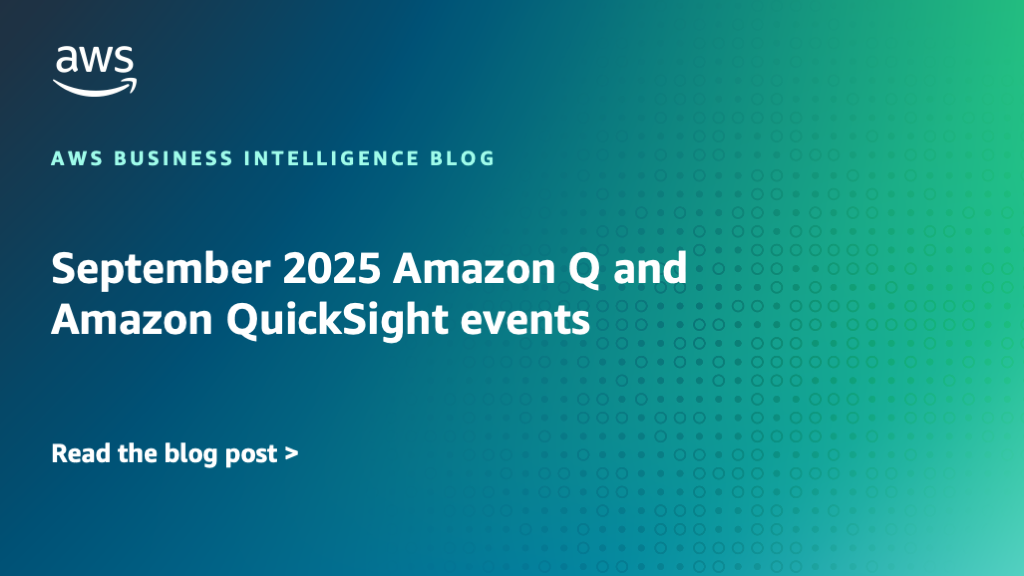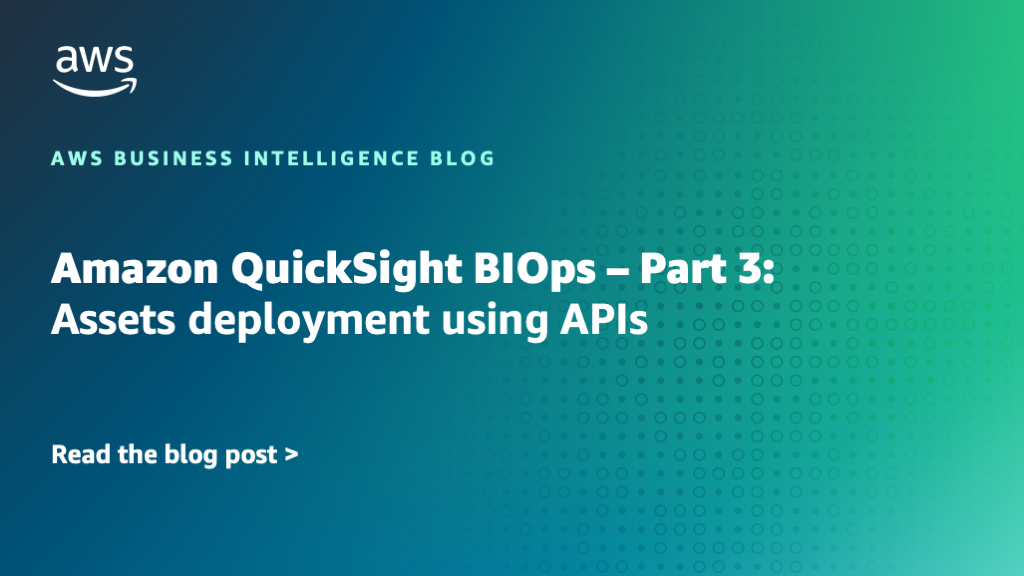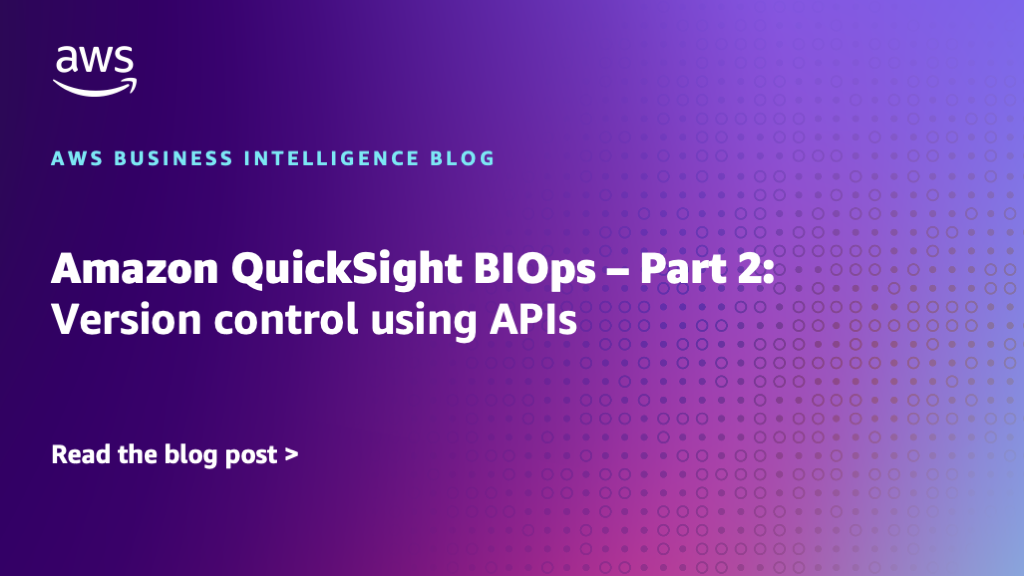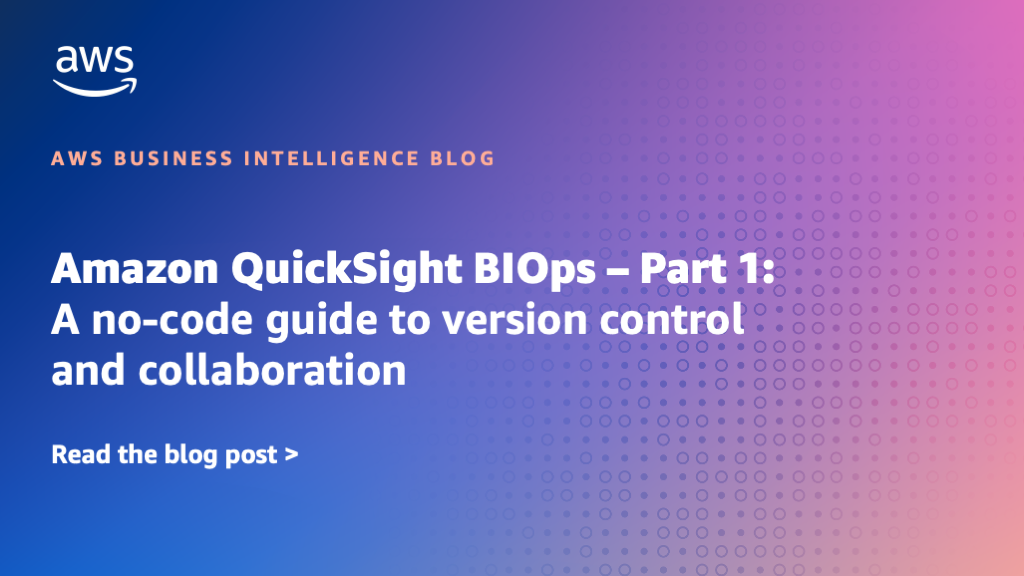AWS Business Intelligence Blog
Deliver Amazon QuickSight pixel-perfect reports to multiple customer groups
In this post, we demonstrate how to set up and schedule Amazon QuickSight pixel-perfect reports with row-level security for multiple customer groups, enabling organizations to deliver personalized reports to different user groups with varying data access levels using a single dashboard and schedule.
Transforming business meetings to get real-time answers to data questions using Amazon Q in QuickSight
In this post, we demonstrate how to use Amazon Q in QuickSight to obtain immediate, data-driven insights during business meetings by asking questions in natural language and receiving real-time, multi-visual answers. The solution enables teams to explore data conversationally through the built-in Product Sales topic, making analytics more accessible and actionable without requiring technical expertise or dashboard creation.
Transform your Google Sheets data into powerful analytics with Amazon QuickSight
In this post, we demonstrate how to enable and configure Google Sheets as a new data source in Amazon QuickSight, including the required AWS Secrets Manager Write permissions setup and OAuth authentication process. Learn how to securely connect QuickSight to Google Sheets data, allowing you to transform spreadsheet data into powerful analytics and visualizations using QuickSight’s business intelligence capabilities.
Availity accelerates data-driven healthcare decision-making with Amazon QuickSight and Amazon Q
In this post, Availity shares how they implemented Amazon QuickSight and Amazon Q to transform their healthcare analytics capabilities, enabling real-time insights from billions of transactions using self-service analytics and natural language querying. The solution helped Availity reduce dashboard creation time from days to minutes while scaling from 300 pilot users to over 100,000 customers, all while maintaining strict healthcare compliance requirements.
September 2025 Amazon Q and Amazon QuickSight events
Amazon QuickSight powers data-driven organizations with unified business intelligence (BI) at hyperscale. With Amazon Q in QuickSight, business analysts and business users can use natural language to build, discover, and share meaningful insights in seconds, turning insights into impact faster. Join us for online and in-person events in September 2025.
Amazon QuickSight BIOps – Part 3: Assets deployment using APIs
In part 3 of this post series, we explore API-driven BIOps strategies in QuickSight, focusing on cross-account and multi-environment asset deployment, conflict detection and resolution during dataset updates, and permission management across different environments.
Amazon QuickSight BIOps – Part 2: Version control using APIs
In part 2 of this post series, we explore how to implement API-driven business intelligence operations (BIOps) framework in Amazon QuickSight to reduce manual workload and improve lifecycle management.
Amazon QuickSight BIOps – Part 1: A no-code guide to version control and collaboration
In part 1 of this post series, we demonstrate how to implement BIOps using the no-code console features of Amazon QuickSight, showing how to version dashboards, reuse visuals, collaborate in parallel, and safely deploy updates through the QuickSight UI.
August 2025 Amazon Q and Amazon QuickSight events
Amazon QuickSight powers data-driven organizations with unified business intelligence (BI) at hyperscale. With Amazon Q in QuickSight, business analysts and business users can use natural language to build, discover, and share meaningful insights in seconds, turning insights into impact faster. Join us for online and in-person events in August 2025.
How BeyondTrust embedded Amazon QuickSight for identity security insights
In this post, we share how AWS Partner BeyondTrust used the embedded analytics capabilities of Amazon QuickSight to revolutionize their reporting infrastructure, streamline their development process, and deliver enhanced value to their customers.
